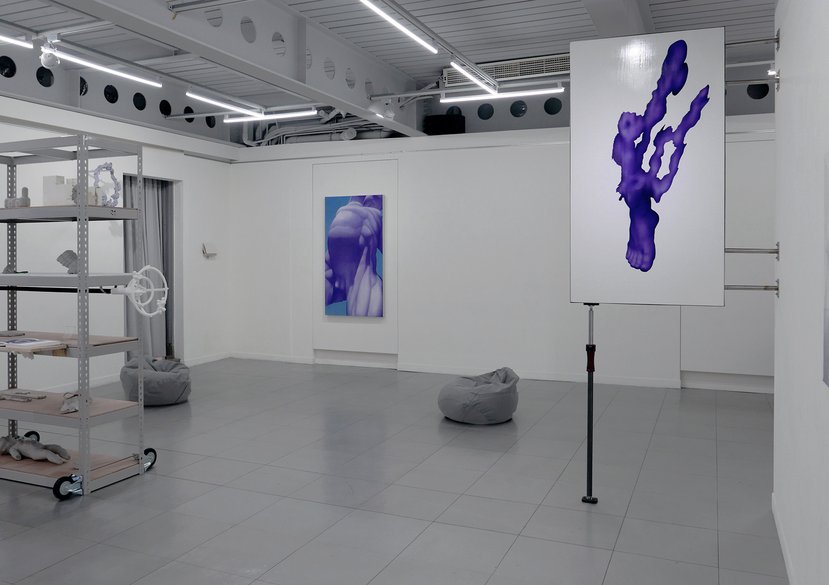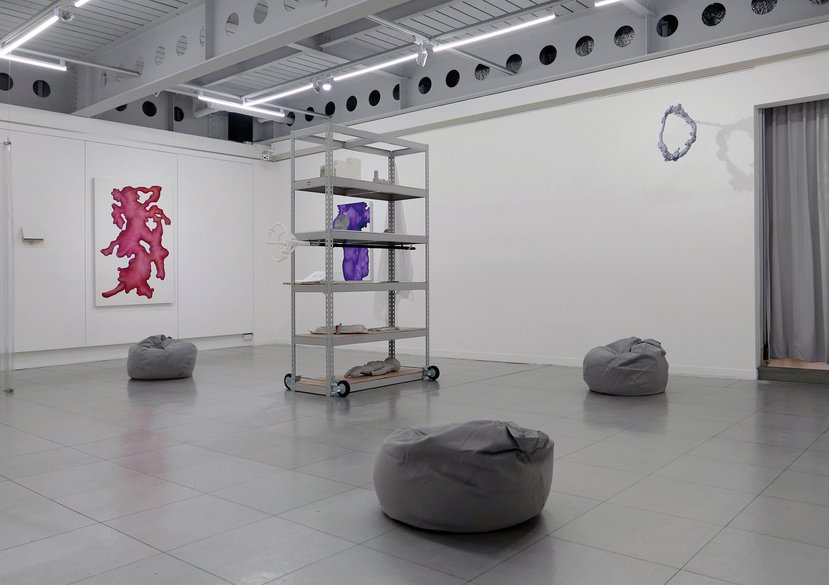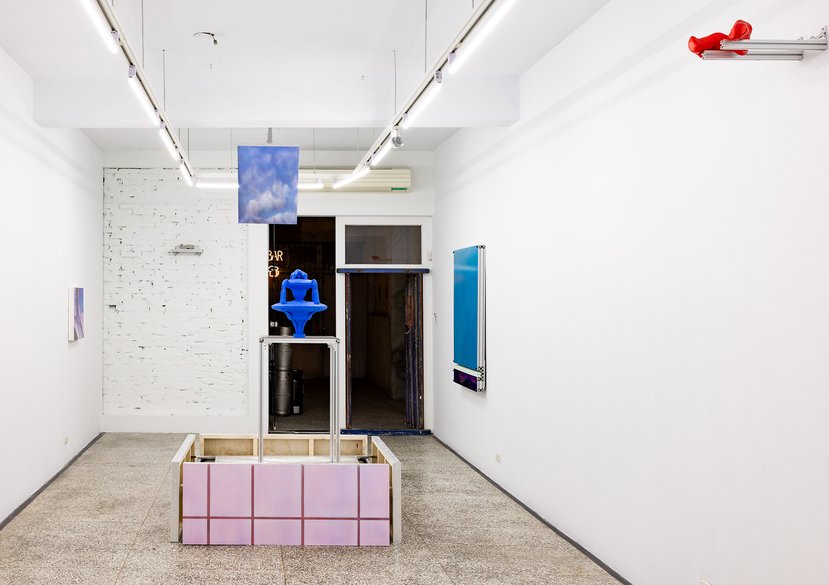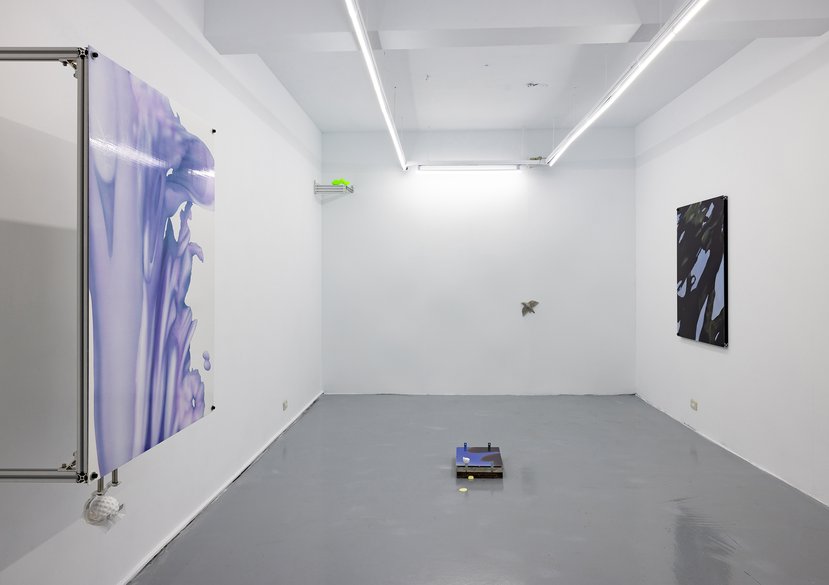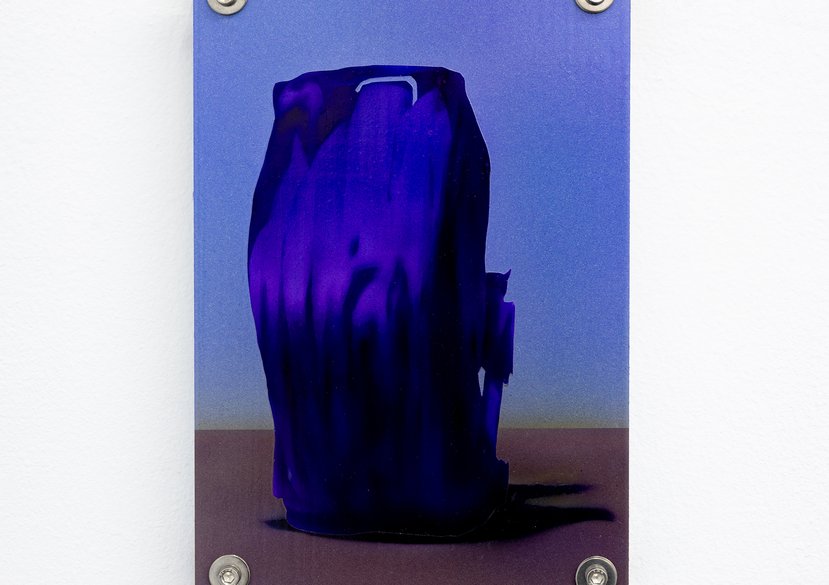
The Shamanic Condition of Becoming Posthuman— being embedded in scattered landscapes
This is a research project led by series of art practice and written thesis to develop the possibility of an alternative-posthuman subject Shamanic Condition, which lies outside mainstream posthuman subject (with Western humanism as the trajectory to the position between the philosophy of technology and human beings), and discuss the affirmative fragility that the body manifests in it. This research derives from retrospection of my cultural background (Taiwan's biological multiculturalism and colonial history) and the philosophy of change in Taoism. Based on this, taking history as a mirror, through reviewing colonial history and the disidentification and heterogeneity of post-humanism to seek their echoes. The development of this alternative posthuman subject means that for the ‘Others’ who have undergone constructed modernisation (colonialism, the international system), the many contexts of posthuman generate a gap with the other's historical experience. This gap thus needs to be driven by crossover dynamism that we can fill by tapping into the experience production, hybrids of tradition and modernity, to enrich the complexity of posthuman subjects.
This research is structured by my art practice interspersed in the beginning/end of each chapter, and further discourses around the possibility of posthuman subjects with the relevant theses. It applies art practice, exploratory research, interdisciplinary research, descriptive research, and style analysis as research methodology. Thesis structure includes four chapters. They are: 1. The Self; 2. Solid body? 3. Non-human human; 4. Conclusion—Shamanic Condition.
In particular, the research focuses on theses to the philosophy of technology to first sort out the posthuman subject: N. Katherine Hayle's How we became posthuman (1999), Rossi Braidotii's The posthuman (2013), Donna J. Haraway’s Simians, Cyborg, and Women: The Reinvention and Nature (1991) et al. Rather than focusing solely on technology itself and what it means to be human, I—from reviewing Taoism's philosophy of change, colonialism's production of experience, and related art practices—have noticed that exploring identity politics of colonialism, when viewed as a bio-technology, can more effectively drive into thinking about the heterogeneity and complexity of posthuman subjects. Therefore, this research also conducts thematic exploration and mining through the theses related to colonialism and its ‘technology’ and comparison with posthuman theses. These mainly include A History of Healing in East Asia (2017) edited by Shiyung Liu and Wen-ji Wang, The Birth of the Clinic (1973) by Michael Foucault, Chinese Thought by Roel Sterckx (2019). ) and Shih-shan Susan Huang's Picturing the true form (2015), with exploration of contemporary artist Stelarc's practice about the body, machine and participants, Kadder Attia and Chen Chieh-Jen's practice about history and colonisation, and my practice about the imagined aesthetics of alternative-posthuman subject. The research question points to: Beyond reviewing humanism and cybernetics, is there any possibility to jump out from dead ends such as ‘self/others’ and identity? In the development of alternative-posthuman subjects, what kind of imagination can the manifestation of the others’ crossover be performed? Now, an understanding of today’s human’s position is necessary.
Key details
School, Centre or Area
Area of expertise
Supervisors
Personal links
Gallery
More about Ban-Yuan
Biography
Ban-Yuan Chang's art practice and research primarily focus on the body as the carrier of body image, exploring the entangled relationship between technology and humanity. He particularly emphasizes the production logic of the "former other" (constructed modern experiences and identity) under the Western framework in the context of posthuman. Chang excels in examining the relationship between identity production and its emboded experiences concerning the technological era and body image by establishing a conceptual framework of the non-Human human, delving into the possibilities in this constrained and fluid world: How can one contemplate self-identity in this limited-but-liquid world? Through mediums such as painting, mixed-media installations, written works, and sculptures, Chang employs an installation-like approach to pose questions and explore his imaginative inquiries into the intersection of the technological age and body image.
Degrees
2018-2023 PhD in Arts & Humanities Research, Royal College of Art, London, United Kingdom
2015-2016 MA Fine Art, UAL Chelsea college of Arts, London, United Kingdom
2010-2014 BA, Hua Fan University Department of Art and Culture creative design, Taipei, Taiwan
Experience
2016-2017 Paramedic (substitute military service), New Taipei City Fire Department, New Taipei City, Taiwan
Awards
2017 Made In Taiwan young artist Award by Ministry of Culture
2014 <Son> , Taiwan young artist collection project, National Taiwan Museum of Fine Arts, Taichung, Taiwan
Exhibitions
Solo show
2024 圖 t__u volume 02, 182artspace, Tainan, Taiwan
2023 圖 t u, Helios Gallery, Taipei, Taiwan
2019 The Self, Humans and Machines with their Residues, Taipei Fine Art Museum, Taipei, Taiwan
2017 Meditation From the Empire Legacy, Made in Taiwan zone Young Artist Award,Taipei Art Fair , World Trade Centre, Taipei, Taiwan
Group Show
2024 The Gravity of Whisper,182 artspace,Tainan,Taiwan
2024 The Body Boundary of Contemporary Society, Wan Gallery, One Art Taipei, Hotel Metropolitan Premier Taipei, Taipei, Taiwan
2023 Lefties Do it Rights,Sinpin pier Art Space, Kaohsiung,Taiwan
2023 Repetition and Difference: Posthuman.Diverse Species, National Yang Ming
Chiao Tung University Art Centre, Hsinchu, Taiwan
2023 HEMLINGBY3, Taipei Artist Village/Carp Gallery, Taipei/Taichung, Taiwan
2022 Roaming in time, Flame Taipei ,Waley Art, Taipei, Taiwan
2022 HEMLINGBY2, Carp Gallery, Taichung, Taiwan
2022 Body's Body, Changhua County Art Museum, Changhua,Taiwan
2022 Multiple Copies - Readable Multiplex Landscape , Tainan Art Museum, Tainan,
Taiwan
2021 Enclave, Asparagus Studio, Taipei, Taiwan
2019 RCA The School of Arts and Humanities Work in Progress Show, Royal College of Art, London, United Kingdom
2018 Human Condition, Kuo Mu Shen Foundation, Taipei, Taiwan
2016 Future Island START ART FAIR Project, Saatchi Gallery,London, United Kingdom
2016 Chelsea Summer Show, Chelsea College of Arts, London, United Kingdom
Publications
Chang, Ban-Yuan, 2023, Thesis, The shamanic condition of becoming posthuman:
Being embedded in scattered landscapes PhD thesis, Royal College of Art.
Works included in : 2022 Chiang Pei-Hsin, Multiple Copies - Readable Multiplex Landscape (Tainan: Tainan Art Museum, 2022). ISBN: 978-986-5487-80-5
2019 Chang, Ban-Yuan, The Self, Humans and Machines with their Residues: A brief discussion on our position in today's world and these inseparable and entangled bounds (Taipei: Taipei Fine Arts Museum Press, 2019). ISBN: 978-986-5412-21-0
Interview
隨意聊聊, 隨藝聊聊 EP17 | 靠X 唷! 你以為你在數位手術台上喔! 快加入我們迷霧版圖中寫生 的行列吧!| 來賓: 藝術家 張般源 [Podcast] 25th April 2024 https://open.spotify.com/ episode/5t9kRQEzIgxLp6DocsPTke [accessed on 25th May 2024]
觀弱音, EP126 『倫敦藝術沒有地圖』 藝術家張般源 [Podcast] 14th September 2023 https://www.youtube.com/watch?v=7aqO909UYk8&ab_channel=%E8%A7%80%E5%BC%B1%E9%9F%B3 [accessed on 25th May 2024]
Artistes Manifestes, Adélie Le Guen, Chang, Ban-Yuan, 'Entretien avec Ban-Yuan Chang : « Humanism in posthuman subject »'[online] 27th March 2020 https:/artistesmanifestes.fr/2020/03/27/entretien-avec-ban-yuan-chang-humanism-inposthuman- subject/
Tainan Art Museum, Following Artist #Chang Ban-yuan to Explore the Exhibition |Multiple Copies - Readable Multiplex Landscape [online video] https://www.youtube.com/watch?v=bENVRWWhY80&ab_channel=%E8%87%BA%E5%8D%97%E5%B8%82%E7%BE%8E%E8%A1%93%E9%A4%A8 [accessed on 29th Janurary 2024]
